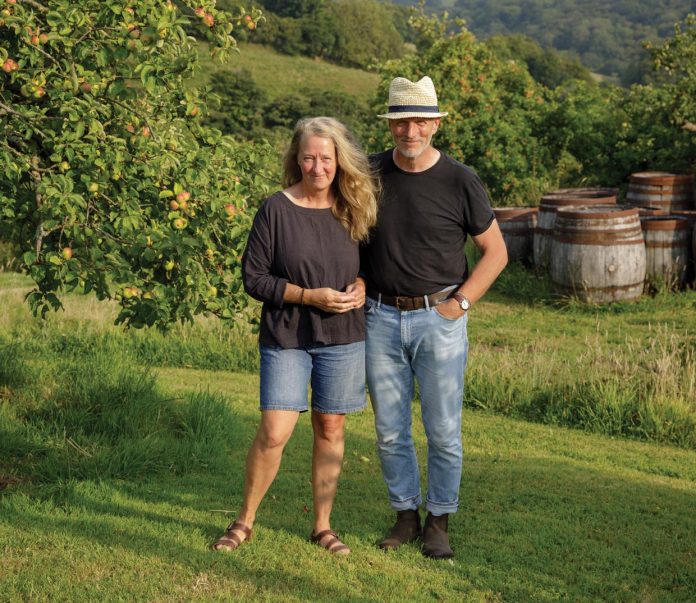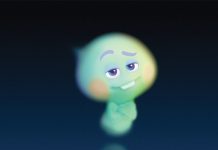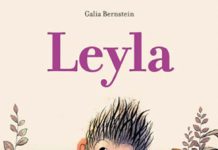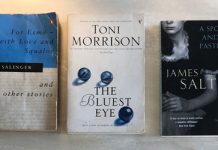Life after The Salt Path. Jess Thompson talks to best selling author Raynor Winn
Raynor Winn’s The Salt Path has become a publishing phenomenon since it was released in early 2018. Her memoir of how she and husband, Moth became homeless—quickly followed by him being diagnosed with a debilitating neurological disease—was a Sunday Times top ten best-seller for more than 54 weeks, has been translated in 14 languages and optioned by a film company. Furthermore, people’s strength of feeling for her story has meant that at the 60 talks and literary festivals she’s attended (generally with Moth quietly sitting in the audience), tickets have sold out within days of going on sale.
So, to say there was a weight of expectation riding on her follow-up book, The Wild Silence might be putting it mildly.
“It was a completely different experience to write,” Raynor tells me, her voice soft and slightly hesitant when she calls me from her new home in Cornwall. We’d tried to Zoom but her phone was too old and cracked to have the capability—more of which later.
“The Salt Path had its own narrative arc, and I just needed to retrace it. I had Paddy Dillon’s guide to the South West coast path, with Moth’s pencilled notes in the margin, and everything else just followed.
“Last year, I started writing the sequel then suddenly thought, this is so shallow and it’s not saying what I want it to say. I decided that if I just did the obvious thing and wrote a follow-up then I wouldn’t be doing what I needed to do for myself. So I left it for ages, then came back to it with only four months before the deadline to hand it in. The whole thing, from start to finish… It was quite tricky.” She laughs. “But then I realised that I couldn’t think about who was going to read it. I had to put myself back into the framework; into the mindset I’d had when I wrote The Salt Path. Because it was only then that I could actually say what needed to be said—namely about the natural environment and our connection to it.”
The Wild Silence is indeed a very different book to its precursor. It’s a more fractured narrative, oscillating between childhood memories—many of which show how and why Raynor’s developed such a deep connection with the land—and recalling events which happened after finishing the walk. “I realised that I had to first go backwards, in order to explain what I was trying to say.”
Of course, few who’ve read The Salt Path can fail to have been moved by the love story of Raynor and Moth; and it’s equally heart-warming to read about how it all began when they met as teenagers, Moth’s hair “hanging in Celtic plaits, his old RAF coat flapping behind him.” He was already an activist, “magnetically drawn to the countryside, to the wilderness” and their first adventure involved a trip to Scotland, where their temporary campsite was washed away by a ferocious storm. What’s totally unexpected, however, is to read about the animosity her parents felt towards him, rejecting him, she writes, “with a venom and ferocity which wiped out every vision I had of what my family was.”
When I say this must have been a great sadness, she pauses. “They eventually came to terms with the fact that Moth was my choice, but I don’t think they were ever fully reconciled to the idea that I’d made the right one. Despite the fact that he remains the most extraordinary person I’ve ever met. So yes, it was one of the greatest sadnesses; because I’ve always wanted to keep everyone I’ve ever loved close in my bubble—as everyone does. I just had to have two bubbles.”
Writing with such honestly is a trademark of her style and one of the reasons that people write to her from all over the world, telling her their own stories: “some extraordinary, often personal, sometimes awful ones.
“To start with I was a little bit shocked, but then I began to realise that this was the beauty of what I’d done in writing The Salt Path—that it had connected people who felt they had no-one to connect with, creating a sense of a mutual humanity.”
Still, I ask, does she worry about having written about her parents’ feelings? “Even now I feel it’s a bit of dilemma. But at the same time it’s the truth of the way it was, so I don’t think it was something that would have come as a surprise to them.”
The poignancy of her reflections create a quiet sadness at the beginning of the book, encapsulated by the Cornish word ‘hireth’ which marks an early chapter. “There’s also hiraeth in Welsh, but there doesn’t seem to be an English term for it. It’s a longing for something that’s lost: for a home that’s no longer there; for something we never had; the fact that it’s never been in our lives. I think I was trying to express this sense of disconnection, of not feeling any attachment to my roots, my life—for everything had been stripped away from it.”
“Except Moth,” I say with relief—the state of his health having been my very first question. And indeed, the brilliant news is that his condition hasn’t markedly deteriorated in the last ten months. “He did have a downturn over winter, which wasn’t good, but we’ve tried to be a lot more active during spring and summer this year and his health’s picked up again.”
Part of the reason for this was the extraordinary opportunity of revitalising an overused farm, which Raynor and Moth were offered to rent by a man who’d read The Salt Path and loved it.
Set in 120 acres of a secluded valley that looks down to a creek, it includes 20 acres of orchard that’s now beginning to flourish as a result of the couple’s more sympathetic approach to land management. “It’s a brilliant use of the degree Moth did at the Eden Project after we finished the walk,” Raynor says, with obvious pride. “And in treating the land with respect, it’s extraordinary how quickly the biodiversity has exploded. But it also means that, finally, after the years that have passed, we’ve found our peaceful place.”
I ask her, somewhat nervously, whether the farmhouse is now habitable—for when they moved in it had been vandalised, with glue in the locks and a cacophony of mice living in the attic. “We’ve still got a few rodents,” she says cheerfully, “but at least it’s now got a bit of paint on the walls—and it’s dry!”
When we discuss the apples, with which they’re planning to make their first batches of cider this year, I suggest that they could market it as Salt Path Cider; and in so doing amass the fortune that not even her colossal book sales have created to date. “But it might taste awful,” she says. “Although I guess everyone might buy a trial bottle.”
Sadly, I suspect she’s not going to follow me up on my suggestion, just like her previous “Oh… okay” expressing her doubt about my idea that she should try and use her fame to wrangle a free phone to replace the eight-year-old, second-hand one her daughter kindly passed on. In fact she’s distinctly embarrassed by the idea. “Famous? Me? Really? Well, if I am, I don’t think it’s changed me in the slightest. I still get up, put the kettle on, let the dog out and think, okay, what am I going to do today? The only real thing that’s changed is that when the electric bill comes through the door it just makes me smile, because I know I can actually pay it.”
And of course the success of her book has, crucially, reunited her and Moth with the land—which is where she believes he thrives. In the last part of The Wild Silence they go on another walking trip, this time having Paddy guide them through Iceland. “It was a really tough trail, and yet it seems that the tougher the challenge, the better the effect on Moth,” she recalls. “After the first few days he was starting to feel strength and co-ordination return to his body; things that aren’t supposed to happen with his illness. We walked through miles of ash fields and dead lava flows—through an alien landscape that felt like a movie set in space; a land at its very beginning where the volcanic eruptions had just ended and the earth was starting to rejuvenate—just like Moth’s wellbeing.
“I do feel we’ve stumbled upon something,” she says. “Some doctors say it’s Moth’s own version of ‘something’; others point to the restricted diet or endurance training he experienced during our days on the path. Personally, I’m still looking for what the answer is; partly because CBD is still so under-researched.
“One of the things I’m particularly fascinated by is that most plants, to some degree or other, emit something called a secondary metabolite—it’s like a chemical that it puts out into the air, and is the thing that you see as a blue haze on a hot summer’s day when you look across a forest or woodland. Plants use it to protect themselves: from the heat, predators, pests or disease.
“There’s only been a small amount of research carried out, but it’s been found that the human body reacts positively to these chemicals, so it’s something I’m really interested in. For, just like the Japanese believe that the practice of forest bathing has the power to counter illness, I believe that Moth interacting with nature has tangible physical benefits.”
When I ask what their next trip will be, she gives very little away, but acknowledges that it will be within the British Isles and once again guided by Paddy. I wonder if they’ve finally met, and she’s delighted to say yes. “I was at an event in the Lake District and spotted him in the audience. I thought, I know that face, so we got him up on stage, and he was so lovely. Absolutely your genuine sincere man-of-the-hills sort of person that, from reading the guide book, we’d thought he’d be.”
When I ask what’s been the highlight of 2020 she guiltily proposes, “Lockdown?” before giving an alternate suggestion. We discuss that she’s not alone in thinking it. “Horrible as it has been for so many people, it couldn’t have come at a better time for me; giving me these quiet moments to reconnect with myself. And it’s meant that it’s been just me and Moth; which allows me to be my normal self—not really talking to anybody but him.”










